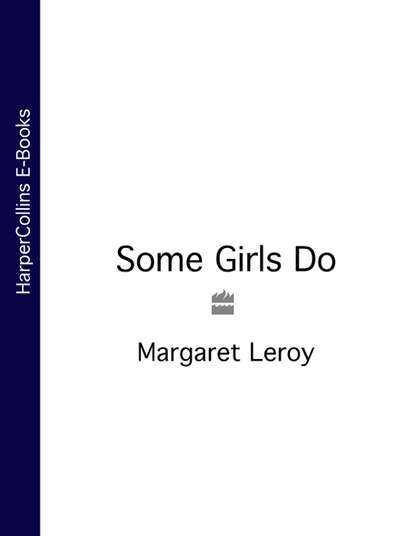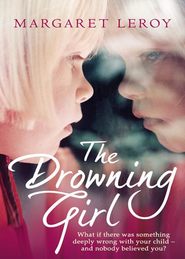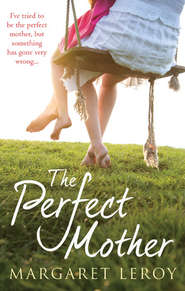По всем вопросам обращайтесь на: info@litportal.ru
(©) 2003-2024.
✖
Some Girls Do
Автор
Год написания книги
2018
Настройки чтения
Размер шрифта
Высота строк
Поля
These women are exquisite. They are quintessentially feminine, scarcely made of solid flesh, almost translucent, with the perfect facial features of beautiful children – yet the enchanting surface is pure illusion.
The romantic poets – Keats, for instance – adored the beautiful predator.
I met a Lady in the meadsFull beautiful, a faery’s child, Her hair was long, her foot was lightAnd her eyes were wild. She took me to her faery grotAnd there she wept and sighed full sore …
(#litres_trial_promo)
She takes the initiative; she takes him back to her place. There she weeps and sighs, moving the man with some hint of sorrow beyond words – but it’s all just part of her seduction technique. She leaves him spent and desolate, enslaved or vampirized amid a barren landscape – ‘The sedge is withered from the lake.’
Lady Arabella March in Bram Stoker’s psychotic last novel, The Lair of the White Worm, is another beautiful predator.
(#litres_trial_promo) In Ken Russell’s film version, luscious Amanda Donohoe entices a marvelling young man back to her house, where she strips to her black suspenders, grows a splendid set of fangs and kills him with a venomous bite. Bob Dylan also seems to know about these women and their beauty, their initiatives and their supernatural erasures and thefts: his Melinda ‘invites you up into her room’ – but then she ‘takes your voice and leaves you howling at the moon’.
One of the most delectable predators can be found in Angela Carter’s short story, ‘The Lady in the House of Love’. Some of Keats’s themes re-surface in Carter’s thoroughly camp postmodernist telling. This Lady hides her lust for blood behind an air of exquisite vulnerability. She is so delicate she is almost transparent, her hair ‘falls down as straight as if it were soaking wet’, she has ‘the fragility of the skeleton of a moth’, her nails and teeth are ‘as fine and white as spikes of spun sugar …’, and she seems weighed down with some hidden sorrow: ‘A certain desolate stillness of her eyes indicates that she is inconsolable … When she takes them by the hand and leads them to her bedroom, they can scarcely believe their luck.’
(#litres_trial_promo) Later the unvampirized parts are buried under her roses, which grow obscenely lush. She is saved from her undead torment by a man on a bicycle who, totally oblivious to all the clues, sees only a nice girl who needs looking after, and undoes the enchantment by sucking the blood from a cut on her hand.
The predator has feminine qualities to excess – she is almost too beautiful, too fragile, too difficult to console. The one thing that doesn’t fit is her taking of initiatives. The men should have suspected: why would so lovely a creature need to make the moves? She takes him back to her place, she invites him into her bed – but the consummation is not at all what he had in mind.
These stories hint at archetypal fears about women’s sexual attractiveness. Evolutionary psychologists have argued that the biological purpose of female beauty is to publicize good genes and good health and so to suggest that this woman is a good reproductive bet; apparently, for instance, symmetry of feature, which is one of our criteria of beauty, is only found in an organism that has been well-nourished while developing.
(#litres_trial_promo) If this is what female beauty is for, then the male fear must be that this is all illusion. (As indeed it often is – given women’s struggles to re-make themselves with all the money and skill at their disposal.) So in Keats’s poem the landscape is barren and withered; for all those signifiers of health and youth – the woman’s childlikeness and loveliness – there is no fertility here.
In these stories, essential feminine qualities are subverted. The female fragility which evolutionary psychologists suggest appeals to men because it suggests youth and implies that the woman is not carrying another man’s child is in fact a hint that all is not well: here, she is so thin because her unnatural appetites need appeasing. And the nameless sorrow with which she moves the man, stressing her vulnerability, allowing him to take on the role of protector – as strong women still do around men they desire – is just one of her courtship ploys.
The very imagery of vampirism itself – or of the Knight left ‘so haggard and so woebegone’ – suggests the capacity of female beauty to drain the male body. Camille Paglia writes of the temporary impotence that follows desire and its consummation, ‘That women can drain and paralyze is part of the latent vampirism in female physiology.’
(#litres_trial_promo) And on the psychological level, this imagery of greedy women who drink the man’s lifeblood perhaps hints at the male fear that women want just that little bit more than men are willing to give.
Among the romantic poets Coleridge, in particular, seems to have been preoccupied with women’s capacity to ‘drain and paralyze’. In his notebooks he describes dreams in which he was pursued by ghastly female figures who attempted to mutilate or abuse him.
… was followed up and down by a frightful pale woman, who, I thought, wanted to kiss me, and had the property of giving me a shameful Disease by breathing in the face.
…the most frightful Dream of a Woman whose features were blended with darkness catching hold of my right eye and attempting to pull it out.
(#litres_trial_promo)
Coleridge’s dreams of ‘frightful’ women are reminiscent of delusions sometimes experienced by men suffering from psychotic illness, when feelings of arousal are associated with the delusional presence of a woman – and the man’s response is felt as something dragged out of him, as an assault. The fantasy of the succubus, the medieval female demon who arouses men in the night against their will, probably had its origins in such delusions.
The purest expression of these fears of unnatural initiating women in Coleridge’s work can be found in his unfinished poem, ‘Christabel’, which Camille Paglia describes as ‘blatant lesbian pornography’.
(#litres_trial_promo)
Geraldine is a beautiful witch or vampire, dressed in white silk, ‘surpassingly fair’ – the original lipstick lesbian, perhaps. She’s literally glamorous (glamour means magic or spell), and Christabel, the sweet and guileless heroine of the poem, is completely taken in by her enchanting surface. Christabel finds Geraldine moaning in the moonlight outside her castle, invites her in, and unwisely lets her share her bed. Geraldine undresses – revealing an unspecified witch-like deformity – ‘a sight to dream of, not to tell …’ and some vague and terrible sexual assault takes place.
Like the other voluptuous predators, Geraldine has a sob story – in her case, a tale of gang rape:
Five warriors seized me yestermorn, Me, even me, a maid forlorn, They choked my cries with force and fright, And tied me on a palfrey white.
But as with everything else about her, this is a fabrication: Geraldine herself is the rapist.
Geraldine has certain masculine qualities which are underlined for the reader of the poem and which are clues to her unnatural purposes, but which innocent Christabel doesn’t recognize. She looks rather than being looked at – always a cross-sex sign; she has a penetrating gaze – ‘her large fair eye ’gan glitter bright’; but sometimes her eyes shrink as small as a snake’s. And she is in total control: she tells Christabel to undress and get into bed, pretends to pray, then gets in too and pulls her to her.
O Geraldine! one hour was thineThou’st had thy will!
It’s always men who ‘have their will’ of women: this is a way of describing sex that belongs exclusively to male experience.
The voluptuous predator connects with both the bad sexual woman and the man-trapper. Like Alex and Brigit, she is wicked. Like Mata Hari and Sofia the decoy, she has ulterior motives, sometimes of the most extreme kind: she wants blood. Above all, she is not what she seems. Her unfeminine sexual initiatives point to her unnaturalness. But the object of her sexual attentions, dazed by her loveliness, is blind to all the clues.
LIBERTINE WHORES: Those scandalous stages of my life
‘My maiden name was Frances Hill. I was born at a small village near Liverpool in Lancashire, of parents extremely poor and, I piously believe, extremely honest…’
(#litres_trial_promo)
These words, from the first page of John Cleland’s Memoirs of a Woman of Pleasure of 1748, inaugurated a new literary genre all about women who initiate and enjoy it. John Cleland’s two-volume story was a blockbuster of its time. This first prostitute confession was followed by a host of others, especially in France. Today’s pornography has its origins here. ‘Pornography’ actually means ‘the writing of prostitutes’.
In these books, the heroine briefly describes her childhood and adolescence, then comes to her main subject matter, her training and progress as a prostitute, depicted in a series of sexual encounters which are always graphically described, and in the case of Fanny Hill, highly colourful: John Cleland invariably describes genitals as roseate, rubied or vermilion. Unlike earlier English prostitute biographies, such as Hogarth’s A Harlot’s Progress, which ended in misery and death, the story ends happily with the prostitute’s worldly success and contented retirement.
The heroine of these stories is always sensible, clever and sensuous. She makes a lot of money. In the French versions, she’s often a proponent of the anti-religious philosophy of the time. And she loves her work.
She is, of course, entirely a male creation. The first-person narrative is a confidence trick; it creates the illusion of a female subjectivity that is entirely absent. Though the woman appears to be speaking for herself, she tells us nothing about female sexuality. The use of the first person is an erotic device; as writer Lynn Hunt puts it, ‘The reader is provided with the vicarious pleasure of an encounter – be it only textual – with a prostitute.’
(#litres_trial_promo) Her sexual initiatives are contained within the male imagination: they express male desires. This is what makes her initiatives so very acceptable.
The ultimate libertine whore was created by the Marquis de Sade. Juliette is the heroine of his pornographic novel of 1792, Juliette ou les Prosperités de la Vice, the companion volume to his Justine ou les Malheurs de la Vertu. Juliette and Justine are sisters and polar opposites. Juliette is the archetypal whore, Justine the perfect virtuous courtesan. Juliette enjoys sex, Justine is abused. Juliette is knowing, Justine is innocent and guileless, her innocence a constant incitement to the sadism of others. Juliette is brunette, Justine is blonde: Angela Carter has Juliette as the original bold brunette – like Barbara Stanwyck or Joan Crawford, and Justine as one of the many put-upon blondes down to Monroe, whose ‘dazzling fair skins are of such a delicate texture that they look as if they will bruise at a touch, carrying the exciting stigmata of sexual violence for a long time’.
(#litres_trial_promo) Juliette makes lots of money, Justine has to plead to be given shelter – invariably with dire consequences. And Juliette initiates; she is the subject of her sexual encounters: while Justine is passive, used, done-to. Even among prostitutes, it seems, there are madonnas and whores.
Juliette the sexual initiator has some of the qualities of Fanny Hill or her French counterparts in books like Margot la Ravaudeuse: she’s affluent, clever, materialistic and knowing. But unlike Fanny she is also very wicked. She seduces her father, is impregnated by him, murders him and subsequently aborts his child. She enjoys orgies in churches, poisoning, robbery, murder, castration, necrophilia. As Camille Paglia warns – don’t read de Sade before lunch.
Juliette is the most striking and influential example, but there are many other initiating women in de Sade’s stories. Madame de Clairvil, the Princess Borghese, Catherine the Great of Russia and Charlotte of Naples all have something in common with the bad sexual woman: they lack maternal qualities, their goals are money and power, they enjoy sex but it isn’t an end in itself. Yet these fabulous female initiators go way beyond the bad-woman script. With their cruelty, vast sexual appetites and schemes for world domination, they have a close affinity with the ogresses in the roughly contemporaneous French fairytale tradition – like the prince’s mother in Perrault’s version of ‘The Sleeping Beauty’, who was ‘of the ogre race’ and liked eating the fresh meat of little children
(#litres_trial_promo).
The female initiators in de Sade’s pantheon are also literally phallic, in that they have masculinized physical attributes and like to reverse roles. They have obstructed vaginas, or enlarged clitorises: they use dildos and are enthusiastic about buggery – which was a capital crime in France at the time. In the phantasmagorical world that de Sade’s characters inhabit, metaphor becomes reality. Here, the idea that the woman who takes sexual initiatives must have some male attributes is given concrete expression, in that she penetrates.
In reality, women rarely penetrate for pleasure: the dildo-wielding lesbian is a myth. But there is one group of women who regularly penetrate with objects – women who abuse children.
(#litres_trial_promo) Such abuse involves the expression of cruel or violent impulses, and this equation of female penetration with cruelty is apt, because this is what most interests de Sade about sex – the way it can be used to control, exploit and dominate. De Sade seems to have little interest in gender, in the relationships between men and women: what really fascinates him is the relationship between master and slave.
Pornography today has lots of initiating women. Juliette is the prototype of one kind of pornographic heroine – though since de Sade’s time she’s been very much watered down – just as her sister Juliette is the prototype of the ‘heroine’ or victim of the masochistic scenario.
But all this female initiating is contained in structures that are by and for men: men pay, men say what they want, men write the stories. Or if women write the stories it’s to please their men – like ‘Pauline Reage’ who wrote The Story of O for her lover, or Anaïs Nin who wrote purely for money for an anonymous collector of erotica, and whose erotic style was by her own admission ‘derived from a reading of men’s works’.
(#litres_trial_promo)
Pornography is one context in which even extreme female initiatives meet with a lot of male approval – because the larger arena is male pleasure. It’s interesting to reflect that today’s pornography originates with a male fantasy about prostitution – a fantasy about women who obey male desires, however extreme, to the letter, and in so doing experience pleasure. No wonder women find pornography so problematic. We’re cut off from it at source. For, whatever the fantasy, prostitution in reality has absolutely nothing to do with a woman’s own sexual self-expression. The prostitute is yet another female initiator who isn’t doing it for her own pleasure.









